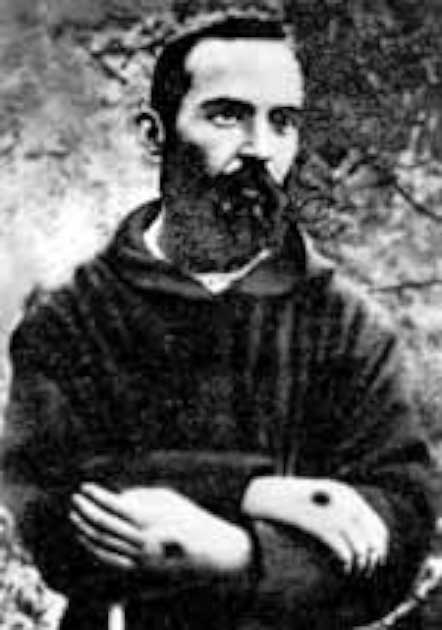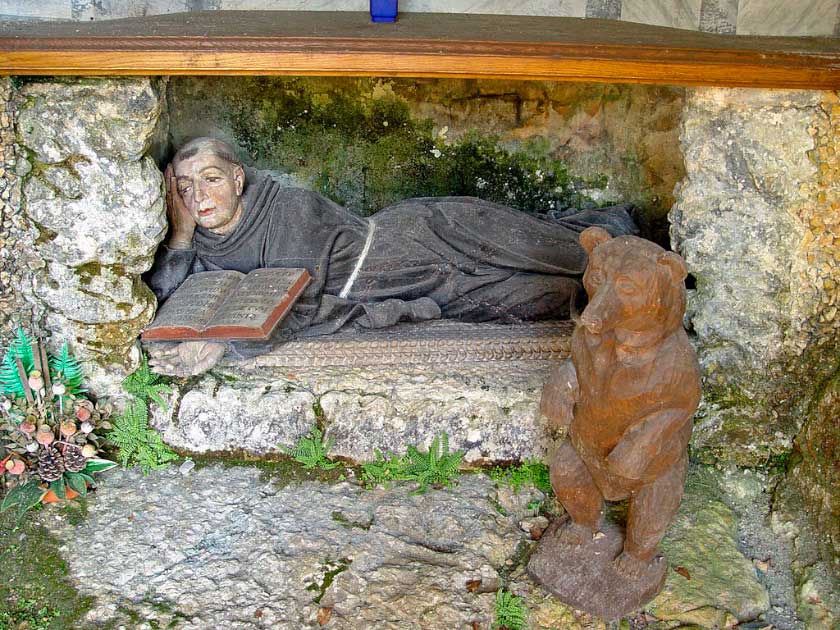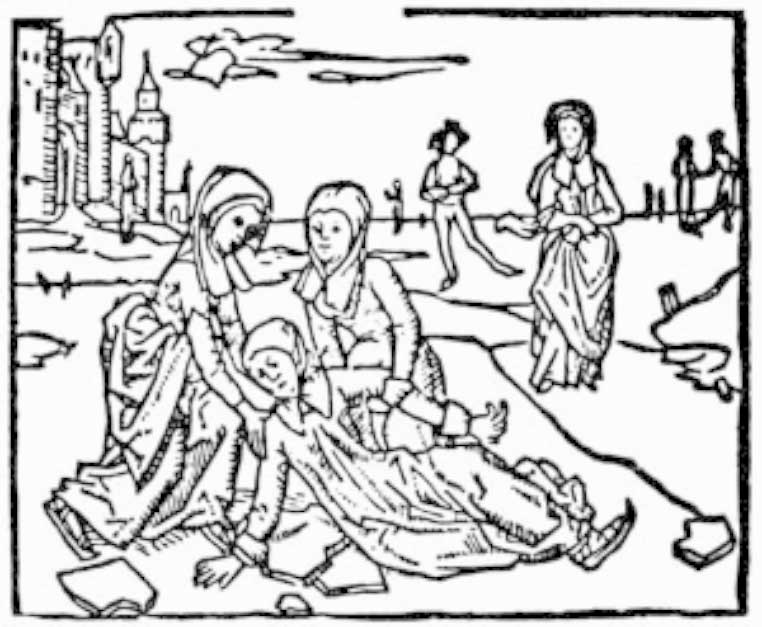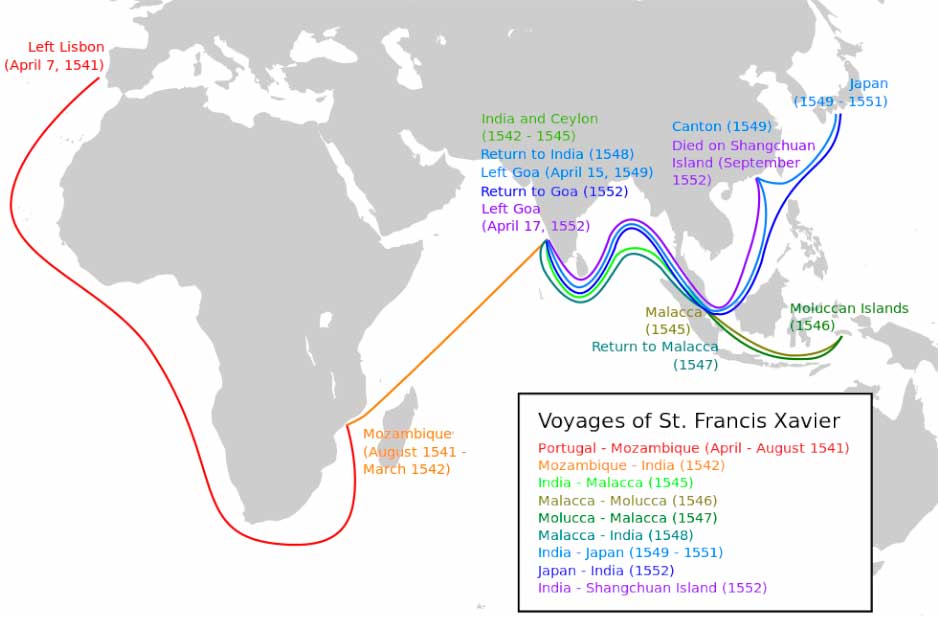The Christian church, and particularly for Catholics and the Eastern Orthodox, patron saints are a central pillar of orthodoxy. Allowing for a specialized and directed form of prayer (which smacks more than a little of polytheism), devotees will direct themselves to whichever saint is most closely aligned with their troubles.
The theory goes that these saints, now in heaven and with the ear of God, will hear your prayers and interject on your behalf with the Almighty, a sort of divine favor system. The saint, obviously in God’s good graces after being martyred for the cause, is more likely to succeed with the request than if you asked directly.
However as the centuries passed it became something of a crowded market. As more and more saints were added to the list, the patronage became more and more specialized, until almost anything had its own heavenly representative and advocate.
Here are eight patron saints who are a bit out there.
1. Saint Giuseppe Benedetto Cottolengo: Patron Saint of Liver Cirrhosis
Saint Guiseppe, born in Sardinia in 1786, became famous for his charity work in Turin in the 19th century. He was an late starter, and only at the age of 41 did he realize his calling to help the poor and the needy.
Through his life he founded monasteries, convents, and organized groups of volunteers to help the poor. This continued right up to his death from typhoid, contracted while helping his patients, in 1842. It would be another century before he was canonized.
The miracle attributed to him (the church is very strict about such things) involved a nun who miraculously recovered from cirrhosis after receiving his ministrations. And so, for ever after, he became the patron saint of late-stage alcoholics.
2. Saint Pio of Pietrelcina: Patron Saint of New Year’s Day Blues
Padre Pio, as he was better known, remains to this day a highly significant saint, particularly in the south of the Italian peninsula. A Franciscan friar, he was venerated for the stigmata (the wounds of Christ on the cross) which appeared on his hands and feet for much of his life.

Born in 1887 into a deeply religious Italian community, perhaps his most lasting legacy is the hospital he founded in Foggia in Italy. However, the stigmata caused the most trouble in his life, dividing the community (and the wider church) into skeptics and believers.
- Saint Januarius and His Liquidating Blood
- The Prisoner Pope of the Vatican and the Makings of Modern Italy
As a recent saint (he died in 1968 and was canonized in 2002) he is still prayed to for all sorts of things. However, one would think that asking a dead saint to trouble God because January 1st has got you a bit down might be a touch self-indulgent.
3. Saint Ursicinus of Saint-Ursanne: Patron Saint of Stiff Necks
Not much is known about Saint Ursicinus, an Irish hermit who lived in the 6th and 7th centuries. To find an account of his life, we have to look 400 years beyond his death (although he was known and worshipped much earlier).

Apparently he was a disciple of another Irish missionary named Columbanus and worked with him in Burgundy, in modern day France. Retiring to the Doubs Valley (which runs from France to Switzerland), there remains a church there dedicated to him to this day.
Perhaps it is the statue of Ursicinus in the town of St Ursanne, where his body supposedly rests, that led to has strange patronage. He is depicted as cramped into a small alcove in the wall, his upper body and neck twisted in discomfort to fit in the small space. When it comes to neck pain, we can certainly believe he knew a thing or two.
4. Saint Adrian of Nicomedia: Patron Saint of Arms Dealers
Everyone gets their own saint, it would seem, even warmongers. But this is not the only strange thing about Saint Adrian. You see, he was married, and his wife was also a saint: Saint Natalia.
A “Heraclian” guard of the Roman Emperor himself, Adrian converted to Christianity and became a martyr for his beliefs in Nicomedia in present-day Turkey in 306 AD. It seems being impressed at the stoicism of a bunch of Christians he was torturing got him imprisoned, and then summarily executed.
After his death he was worshipped for his military prowess, second only to the mighty St George in the Christian military tradition. To this day he remains strongly associated with the military, although the actual number of arms dealers who pray to him remains unconfirmed.
5. Saint Lidwina: Patron Saint of Ice Skaters
Do ice skaters need a saint? That may be besides the point, as they are blessed to have Lidwina, a Dutch mystic who is thought to have suffered from multiple sclerosis (she is also the saint of chronic pain).
Born in 1380 in Schiedam, ice skating certainly contributed to her suffering. After a nasty fall where she broke a rib skating, she became progressively paralyzed with the exception of her left hand. This didn’t prevent her from becoming famous as a miraculous healer.

Modern observers would suspect the MS as being the cause of both the fall and the paralysis. Other, more gruesome symptoms developed as she grew older, such as the loss of patches of skin and even parts of her intestines. But the ice skating connection remained, and now presumably skaters pray to her not to fall, lest they catch a disease of the nervous system.
6. Saint Erasmus of Formaie: Patron Saint of Pyrotechnics
Not to be confused with the patron saint of fireworks (apparently this area is quite specialized when it comes to prayer), the attribution of Saint Erasmus, a 4th century Croatian, makes a lot more sense when you hear that he was also known as St Elmo.
- Cheated in Business or Unlucky in Love? Get Yourself a Curse Tablet!
- Weeping Statues: Divine Miracles or Exploitative Fraud?
Saint Elmo’s fire, that mysterious meteorological phenomenon whereby flames will appear during thunderstorms but cause no damage, became very well known during the age of sail where multiple rumors appeared of the fire playing about the rigging of merchant ships.
St Erasmus was said to have been preaching when the ground beside him was struck by lightning. Unfazed, he continued his sermon, impressing the sailors in the crowd who were obviously very afraid of lightning strikes on the high seas. His patronage of sailors extended to the fire that he gave his name to: the elements may try to destroy your ship, but St Elmo protects.
7. Saint Francis Xavier: Patron Saint of the Entirety of Asia
John the Baptist may have been the patron saint of Asia Minor, but Saint Francis Xavier had a much bigger job. Born in Navarre in 1506, it was for his work as the first Jesuit missionary and his extensive travels that he became known.
Most of Saint Francis Xavier’s life was devoted to this, focused around four places: Malacca, Amboina and Ternate, the islands off the Chinese coast, and Japan. He travelled the entire of southeast Asia, however, feeling that the individual countries did not matter: all would be converted together.

His body lies in Asia still, in the Basilica of Bom Jesus in Goa, India. Canonized as the man who converted more people than anyone since Paul the Apostle, his pioneering work led to a wave of Jesuit missionaries bringing the Bible to the far corners of the world. Not just Asia, but everywhere else too.
8. Saint John Bosco: Patron Saint of Stage Magicians
John Bosco, more commonly known as Don Bosco, was an Italian priest born in Sardinia in 1815. He is most famous today for his work with abandoned children, and the Salesians of Don Bosco founded in his name to continue his legacy.
After a 2002 petition by Silvio Mantelli, a Catholic priest and magician, Don Bosco became the patron saint of stage magicians. “Gospel magic” which combines illusion and dogma is considered his responsibility, and Catholic stage magicians (also apparently a thing) hold free shows for children on 31 January, his feast day.
Don Bosco is also, perhaps even more strangely, the patron saint of Antarctica. Where the crossover between those two responsibilities comes is anybody’s guess.
Top Image: Saint Joseph, married to Mary, the mother of Jesus. Patron saint of expectant mothers. Source: Adam Ján Figeľ / Adobe Stock.
By Joseph Green